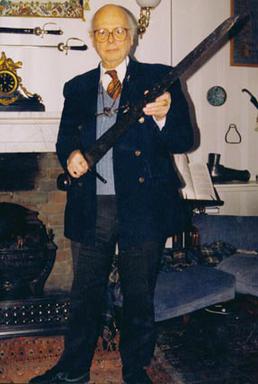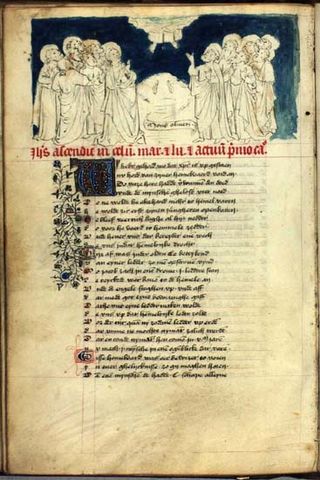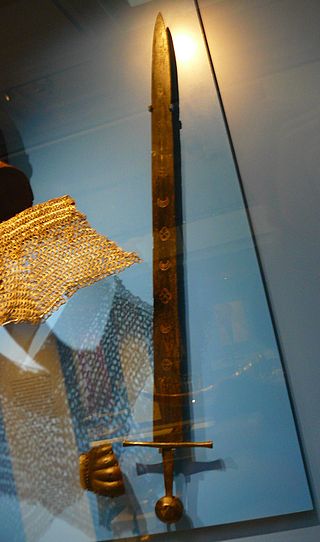
An abugida, sometimes known as alphasyllabary, neosyllabary or pseudo-alphabet, is a segmental writing system in which consonant–vowel sequences are written as units; each unit is based on a consonant letter, and vowel notation is secondary. This contrasts with a full alphabet, in which vowels have status equal to consonants, and with an abjad, in which vowel marking is absent, partial, or optional – in less formal contexts, all three types of script may be termed "alphabets". The terms also contrast them with a syllabary, in which the symbols cannot be split into separate consonants and vowels.

The four temperament theory is a proto-psychological theory which suggests that there are four fundamental personality types: sanguine, choleric, melancholic, and phlegmatic. Most formulations include the possibility of mixtures among the types where an individual's personality types overlap and they share two or more temperaments. Greek physician Hippocrates described the four temperaments as part of the ancient medical concept of humourism, that four bodily fluids affect human personality traits and behaviours. Modern medical science does not define a fixed relationship between internal secretions and personality, although some psychological personality type systems use categories similar to the Greek temperaments.

The Cangjie input method is a system for entering Chinese characters into a computer using a standard computer keyboard. In filenames and elsewhere, the name Cangjie is sometimes abbreviated as cj.
Typology is the study of types or the systematic classification of the types of something according to their common characteristics. Typology is the act of finding, counting and classifying facts with the help of eyes, other senses and logic. Typology may refer to:

A buckler is a small shield, up to 45 cm in diameter, gripped in the fist with a central handle behind the boss. While being used in Europe since antiquity, it became more common as a companion weapon in hand-to-hand combat during the Medieval and Renaissance periods. Its size made it poor protection against missile weapons but useful in deflecting the blow of an opponent's weapons, binding his arms, hindering his movements, or punching him.

In archaeology, a denticulate tool is a stone tool containing one or more edges that are worked into multiple notched shapes, much like the toothed edge of a saw. Such tools have been used as saws for woodworking, processing meat and hides, craft activities and for agricultural purposes. Denticulate tools were used by many different groups worldwide and have been found at a number of notable archaeological sites. They can be made from a number of different lithic materials, but a large number of denticulate tools are made from flint.
Bass or Basses may refer to:

The word zoomorphism derives from Ancient Greek: ζωον, romanized: zōon, lit. 'animal' and Ancient Greek: μορφη, romanized: morphē, lit. 'form; shape'. In the context of art, zoomorphism could describe art that imagines humans as non-human animals. It can also be defined as art that portrays one species of animal like another species of animal or art that uses animals as a visual motif, sometimes referred to as "animal style." In ancient Egyptian religion, deities were depicted in animal form which is an example of zoomorphism in not only art but in a religious context. It is also similar to the term therianthropy; which is the ability to shape shift into animal form, except that with zoomorphism the animal form is applied to a physical object. It means to attribute animal forms or animal characteristics to other animals, or things other than an animal; similar to but broader than anthropomorphism. Contrary to anthropomorphism, which views animal or non-animal behavior in human terms, zoomorphism is the tendency of viewing human behavior in terms of the behavior of animals. It is also used in literature to portray the act of humans or objects with animalistic behavior or features. The use of zoomorphism served as a decorative element to objects that are typically quite simple in shape and design.

A messer is a single-edged sword with a knife-like hilt. While the various names are often used synonymously, messers are divided into two types:

Ronald Ewart Oakeshott was a British illustrator, collector, and amateur historian who wrote prodigiously on medieval arms and armour. He was a Fellow of the Society of Antiquaries, a Founder Member of the Arms and Armour Society, and the Founder of the Oakeshott Institute. He created a classification system of the medieval sword, the Oakeshott typology, a systematic organization of medieval weaponry.

Typology in Christian theology and biblical exegesis is a doctrine or theory concerning the relationship of the Old Testament to the New Testament. Events, persons or statements in the Old Testament are seen as types prefiguring or superseded by antitypes, events or aspects of Christ or his revelation described in the New Testament. For example, Jonah may be seen as the type of Christ in that he emerged from the fish's belly and thus appeared to rise from death.
In archaeology, a typology is the result of the classification of things according to their physical characteristics. The products of the classification, i.e. the classes, are also called types. Most archaeological typologies organize portable artifacts into types, but typologies of larger structures, including buildings, field monuments, fortifications or roads, are equally possible. A typology helps to manage a large mass of archaeological data. According to Doran and Hodson, "this superficially straightforward task has proved one of the most time consuming and contentious aspects of archaeological research".

In the typology of ancient Greek pottery, the dinos is a mixing bowl or cauldron. Dinos means "drinking cup," but in modern typology is used (wrongly) for the same shape as a lebes, that is, a bowl with a spherical body meant to sit on a stand. It has no handles and no feet.

Psychological typologies are classifications used by psychologists to describe the distinctions between people. The problem of finding the essential basis for the classification of psychological types—that is, the basis of determining a broader spectrum of derivative characteristics—is crucial in differential psychology.

In the European High Middle Ages, the typical sword was a straight, double-edged weapon with a single-handed, cruciform hilt and a blade length of about 70 to 80 centimetres. This type is frequently depicted in period artwork, and numerous examples have been preserved archaeologically.

Inuit Sign Language is an indigenous sign language. It is a language isolate native to Inuit communities in the Canadian Arctic. It is currently only attested within certain communities in Nunavut, particularly Baker Lake and Rankin Inlet. Although there is a possibility that it may be used in other places where Inuit live in the Arctic, this has not been confirmed.












